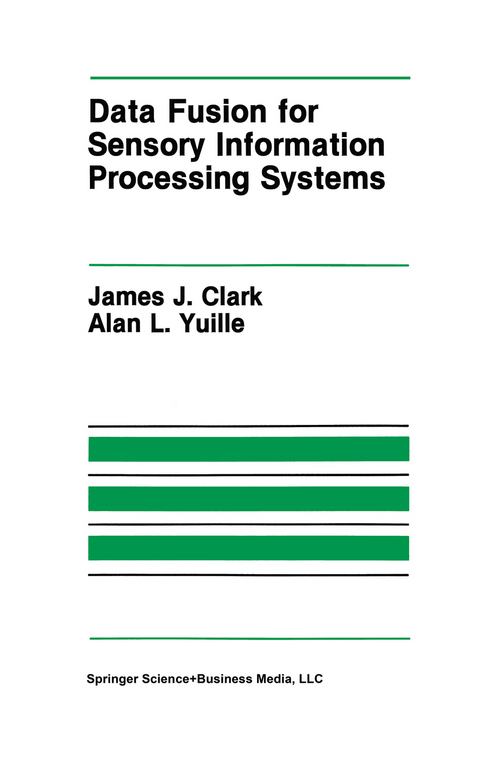
Data Fusion for Sensory Information Processing Systems
Seiten
2010
|
Softcover reprint of hardcover 1st ed. 1990
Springer-Verlag New York Inc.
978-1-4419-5126-7 (ISBN)
Springer-Verlag New York Inc.
978-1-4419-5126-7 (ISBN)
The science associated with the development of artificial sen sory systems is occupied primarily with determining how information about the world can be extracted from sensory data. For example, computational vision is, for the most part, concerned with the de velopment of algorithms for distilling information about the world and recognition of various objects in the environ (e. g. localization ment) from visual images (e. g. photographs or video frames). There are often a multitude of ways in which a specific piece of informa tion about the world can be obtained from sensory data. A subarea of research into sensory systems has arisen which is concerned with methods for combining these various information sources. This field is known as data fusion, or sensor fusion. The literature on data fusion is extensive, indicating the intense interest in this topic, but is quite chaotic. There are no accepted approaches, save for a few special cases, and many of the best methods are ad hoc. This book represents our attempt at providing a mathematical foundation upon which data fusion algorithms can be constructed and analyzed. The methodology that we present in this text is mo tivated by a strong belief in the importance of constraints in sensory information processing systems. In our view, data fusion is best un derstood as the embedding of multiple constraints on the solution to a sensory information processing problem into the solution pro cess.
1 Introduction: The Role of Data Fusion in Sensory Systems.- 2 Bayesian Sensory Information Processing.- 3 Information Processing Using Energy Function Minimization.- 4 Weakly vs. Strongly Coupled Data Fusion: A Classification of Fusional Methods.- 5 Data Fusion Applied to Feature Based Stereo Algorithms.- 6 Fusing Binocular and Monocular Depth Cues.- 7 Data Fusion in Shape from Shading Algorithms.- 8 Temporal Aspects of Data Fusion.- 9 Towards a Constraint Based Theory of Sensory Data Fusion.
| Erscheint lt. Verlag | 8.12.2010 |
|---|---|
| Reihe/Serie | The Springer International Series in Engineering and Computer Science ; 105 |
| Zusatzinfo | XX, 244 p. |
| Verlagsort | New York, NY |
| Sprache | englisch |
| Maße | 160 x 240 mm |
| Themenwelt | Informatik ► Grafik / Design ► Digitale Bildverarbeitung |
| Informatik ► Grafik / Design ► Film- / Video-Bearbeitung | |
| Informatik ► Theorie / Studium ► Künstliche Intelligenz / Robotik | |
| Technik ► Elektrotechnik / Energietechnik | |
| ISBN-10 | 1-4419-5126-1 / 1441951261 |
| ISBN-13 | 978-1-4419-5126-7 / 9781441951267 |
| Zustand | Neuware |
| Haben Sie eine Frage zum Produkt? |
Mehr entdecken
aus dem Bereich
aus dem Bereich
Modelle für 3D-Druck und CNC entwerfen
Buch | Softcover (2022)
dpunkt (Verlag)
34,90 €
Methoden, Konzepte und Algorithmen in der Optotechnik, optischen …
Buch | Hardcover (2024)
Hanser (Verlag)
39,99 €
alles zum Drucken, Scannen, Modellieren
Buch | Softcover (2024)
Markt + Technik Verlag
24,95 €


